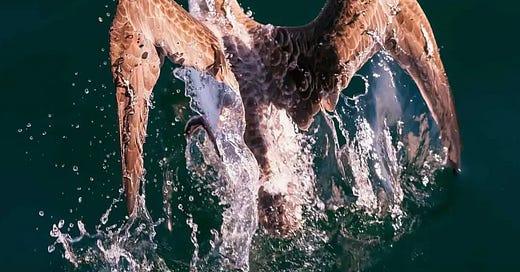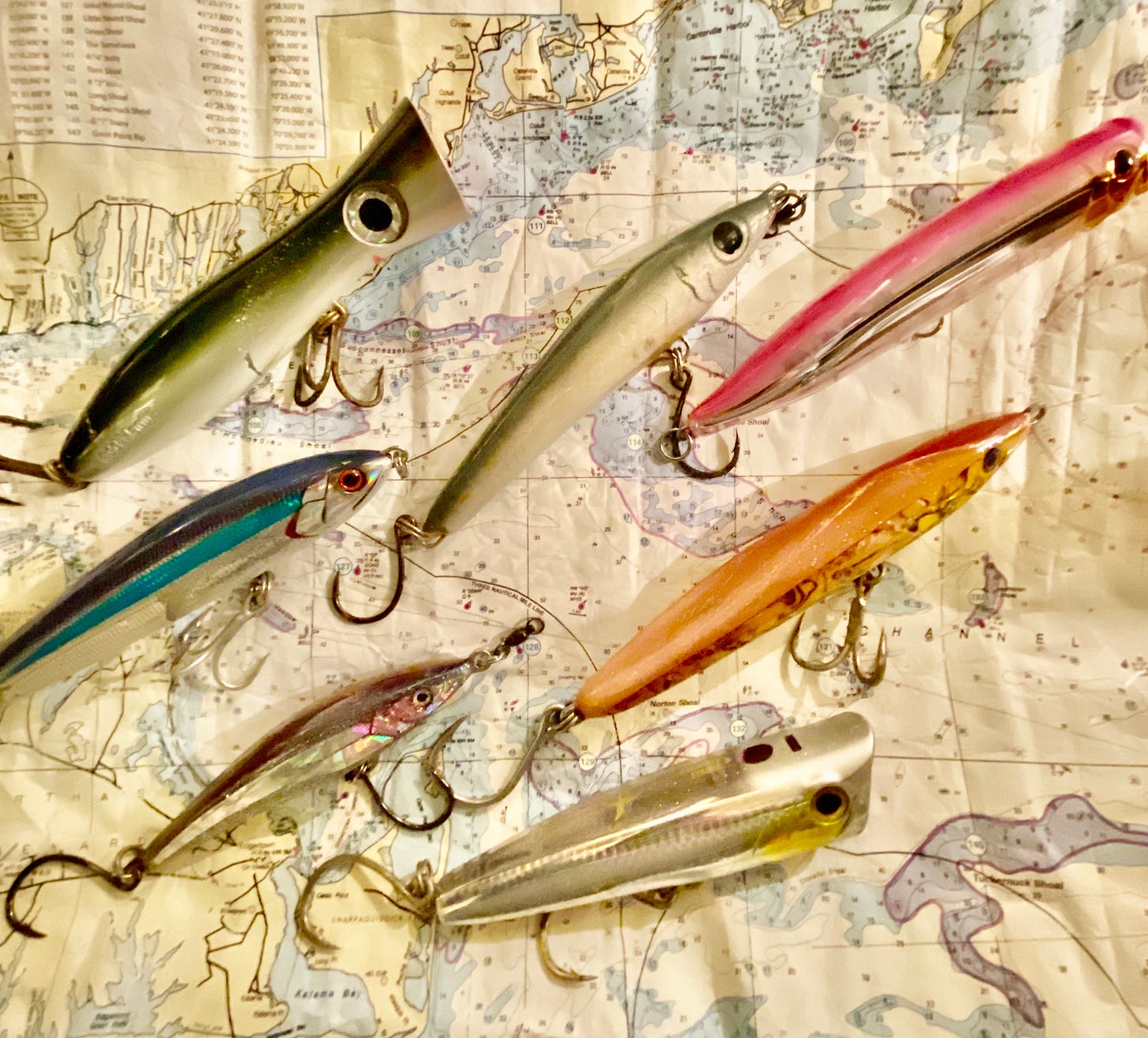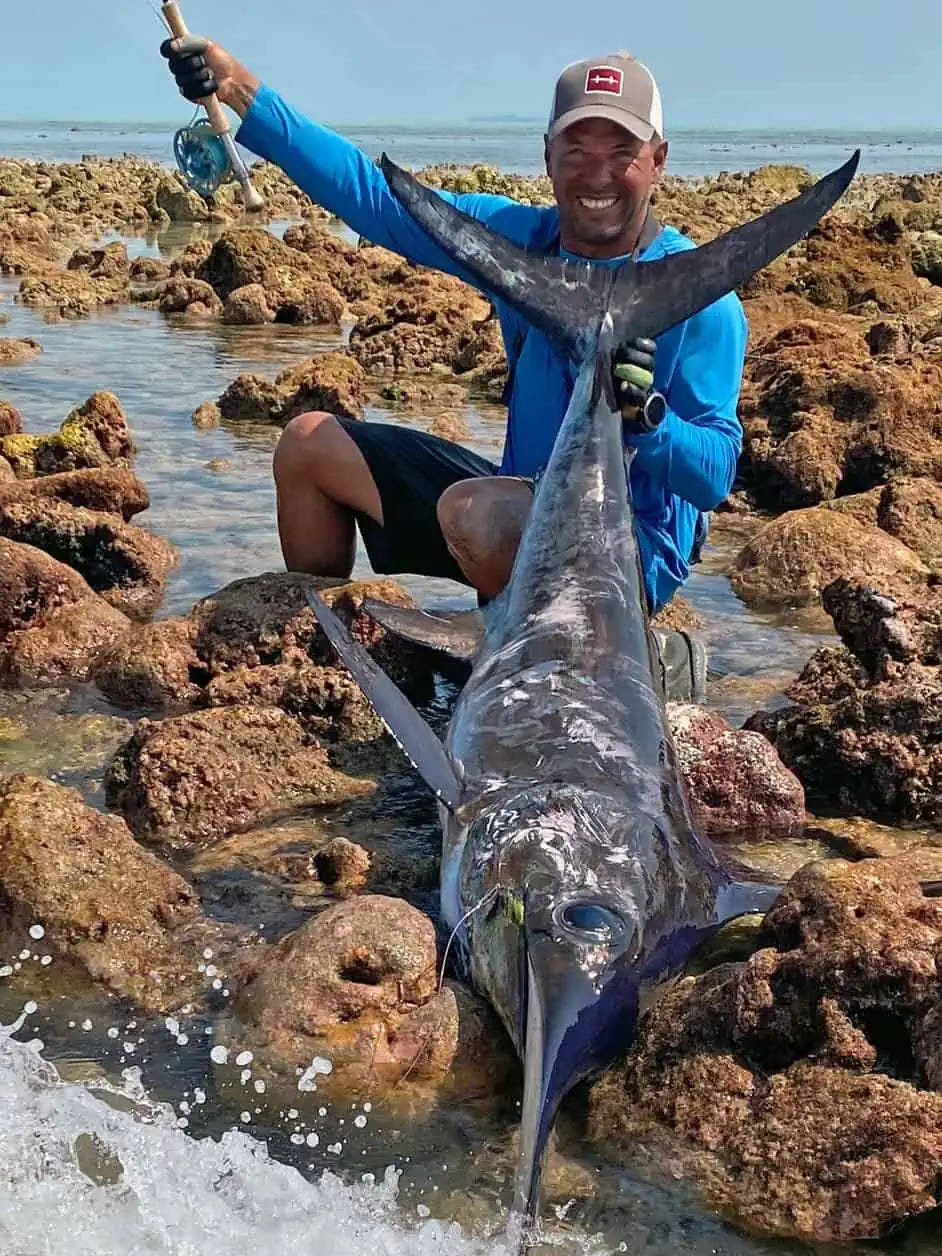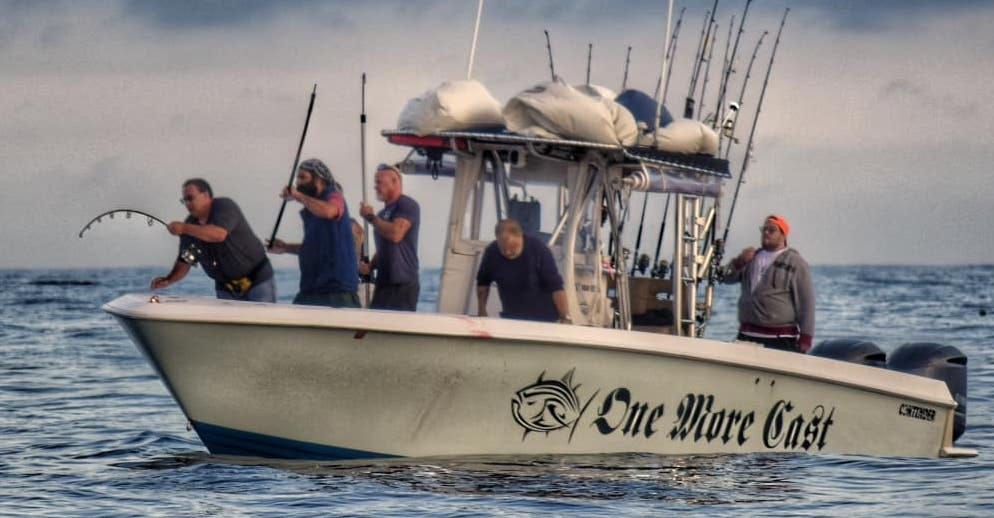The maritime law of salvage has its origins in Roman law, which dictated that one who preserved or improved upon the misplaced property of another was owed compensation, even if the service was not requested. Let’s get out the inter-webs seiner and get to work…
Podcast of the Week: The State of Sportfishing Podcast - Bluefin Tuna Fishing w/ Bryan & Taylor Sears —> A packed episode with a good mix of stories (a 3-dart battle) and bait-fishing tips. They talk about the technicality of structure fishing on the bank, the importance of fishing the “spot on the spot”, anchor angles on the tide cycle, and utilizing your full drag curve when fighting a fish after a down-rod bite. They offer some anchor-ball avoidance tips, which is applicable to fighting around high-fliers Out East, and the advantages of taking an “early” dart shot by running up on a big fish in a small Center Console (just make sure you have an extra bucket or two of dart line).
Fishing Reports: OnTheWater / Fisherman Mag / SaltyCape / HullTruth / 360Tuna
Special Edition - The Tuna Seminar - Part 2: In the Northeast fisheries, March can mean a lot of different things for different folks. For offshore enthusiasts, it’s a stoked ember of hope in the long wait for Summer. For inshore guys and gals, it’s the first gear turning in the Striper migration and a reminder to dust off the ground-fishing gear. And for freshwater diehards, it’s the ice-out commencement party. Either way, gaining ~85mins of sunlight per day this month is both a huge morale boost and an under-appreciated ecological catalyst for greater things to come. This week, we’ll finish up our two part tuna seminar series, with an emphasis on jig & pop fundamentals and how to gather intel.
Finding Tuna & Building a Brocial Network - We’ve interviewed nearly a dozen accomplished tuna captains over the last few months and the majority attest to this recipe for success: one part local knowledge, one part effort, and one part network. TOTW (time on the water) obviously has no substitute, but I can attest to the fact that an anglers learning curve is mostly a product of self-education (like reading The Salvage) and on-the-water application of that knowledge. Over time, not only will your decision-making improve, but your familiarity with certain areas, conditions, and seasonal patterns will feed back into both your intuition and network. To the latter point, building a tuna network is almost always a two-way street. In most cases, you need to engage in a transaction: this could be monetary (like repeat business at a local tackle-shop), it could be bait (or a proven waypoint for bait), or it could be intel about one species (for intel for another species down the road). There are a lot of creative ways to build a rolodex of trusted sources, but the easiest way to get left on read is to ask for something with nothing to offer in return.
Jigging Tactics - Mindset and Presentation —> A lot of folks separate jigging from popping but I still consider jigging a “sight-fishing” technique. Not only is blind-jigging wildly inefficient, but you really shouldn’t differentiate signals on your sonar from those of your eyes, ears, and nose…its all one comprehensive ‘view’ of your environment. Just because the angle of your lines are different doesn’t mean your decision-making process is any different. In fact, both techniques can often be complementary, and allow multiple anglers to comb different segments of the water column without worrying about a tangle.
Check out this informative video below from The Saltwater Edge, which emphasizes setting effective drifts (from up-current) and the different cadences with which you can impart action to your jigs. When primarily jigging, it’s best to start with a variety of retrieves, weights and lure profiles, with the ultimate goal being dialing into the most effective presentation for that day or tide.
Popping Tactics - Approach and Retrieves —> If you’ve been chasing Bluefin for a while or have been reading the Salvage Q&As, you probably know that a critical first step to popping success is boat control. Especially around fussy fish and weekend crowds, a methodical approach (consistently from upwind), throttle discipline (a gradual RPM deceleration) and last second rudder adjustments (helping anglers present a bait in front of traveling fish) can be the difference between a memorable day and going home with a few pics of the sunrise. The next imperative is a leading cast, with a retrieve angle that looks like a naturally fleeing prey. As Capt. Rob Lowell pointed out at the Castafari Seminar, the perfect sequence is a lure that lands out of sight (but not earshot) from the school of tuna, and then having that lure working in its designed fashion as the school approaches its location.
Lure Selection based on tuna behavior —> Most accomplished tuna anglers have ‘confidence baits’ based on seasonal tendencies, location and forage. These baits can generally be broken down into two categories: sight-casting baits and blind-casting baits. Sight-casting baits are utilized when tuna are in sight, plentiful and feeding, and will generally be getting a better look at your bait. They tend to have silent actions, natural colors, are typically smaller or finnesse-y and can be a soft-plastic. Examples include: RonZ, 3-4oz sliders/stick-baits, Hogy Protails, Epoxy Jigs etc. Blind-casting baits on the other hand are used when you need to ‘draw’ a reaction-style strike from neutral or non-surface oriented fish. These baits can incorporate rattles, have ‘loud’ colors (like white/pink/chartreuse), and are generally larger. Think big sliders, poppers, and stickbaits that throw a lot of flash on the sink.
For those wondering about the “why” behind the wiggle and flash of a slider-style plug, look no further than the slow-mo gyration of a flying fish underwater…
‘Kerplunking’ —> This is a hybrid jigging/casting technique that I first learned about from Capt. Mike Hogan at Hogy Lures. It can be very effective around “rafted” shearwaters or bubble-feeds in an area where tuna are milling but not necessarily actively feeding on the surface. You take a 4-6oz soft-plastic jig and put a long cast into a fishy-looking area and let it "kerplunk" into the mid-water column on semi-slack line. Most bites occur on the initial fall and feel like a subtle ‘tap’. If you don’t get bit on the fall, then use a standard yo-yo retrieve back to the boat.
Swordfish Caught on Fly from Shore (SportFishMag) - “The angler waded deeper as the fish moved toward him. Paulsen uses a Winston Air Salt 9-foot, 12-weight rod and Hatch Finatic 9 Plus reel. His reel was loaded with 350 yards of 80-pound braided line beneath RIO GT 475 gram line and 9 feet of 130-pound-test Momoi Hi-Catch fluorocarbon, ending in a custom black and green fly on an 8/0 Gamakatsu hook.
When the fish moved into range, Paulsen made three casts without answer. On the fourth cast, the fish turned, zeroed in on his fly and attacked. After Paulsen set the hook, the huge billfish ran 200 yards parallel to the reef. “If it escaped to the deep, I would never have stopped it,” he said.
Then, the fish turned toward the reef and swam into shallow water where it flailed helplessly in a shower of spray. Moving closer, Paulsen finally got a good look at his catch. “That’s when it hit me, I caught a sword.”
Why Jigging is Better Than Trolling (SaltwaterSportsman) - “It’s true that I have the attention span of a 10-year-old kid, but for me, trolling gets almost unbearable after about 20 minutes. I simply can’t imagine doing it for hours. I’d rather spend the day in a dark pit with venomous snakes. I understand maybe that’s just my ADHD talking.
I guess it can be exciting. If you’re getting bit minutes after you put the spread out, the constant action can be a blast. But if there are that many fish around, and they’re eating good, why bother putting the spread out? Why wouldn’t you just cast or jig? I’m not trying to be cheeky. I’m seriously asking.
…The truth is that no one really cares how you prefer to fish. But on both sides, it’s important to not impede other boats’ ability to catch fish. I always want other boats to catch fish, and I absolutely do my best not to mess them up in any way. Those that don’t care about boaters around them? Well, karma has a way of taking care of that kind of thing.”
Thanks for reading The Weekly Salvage, until next week!
Have feedback or want to learn more?
Reach out to us on IG @Blowin_We_Goin










